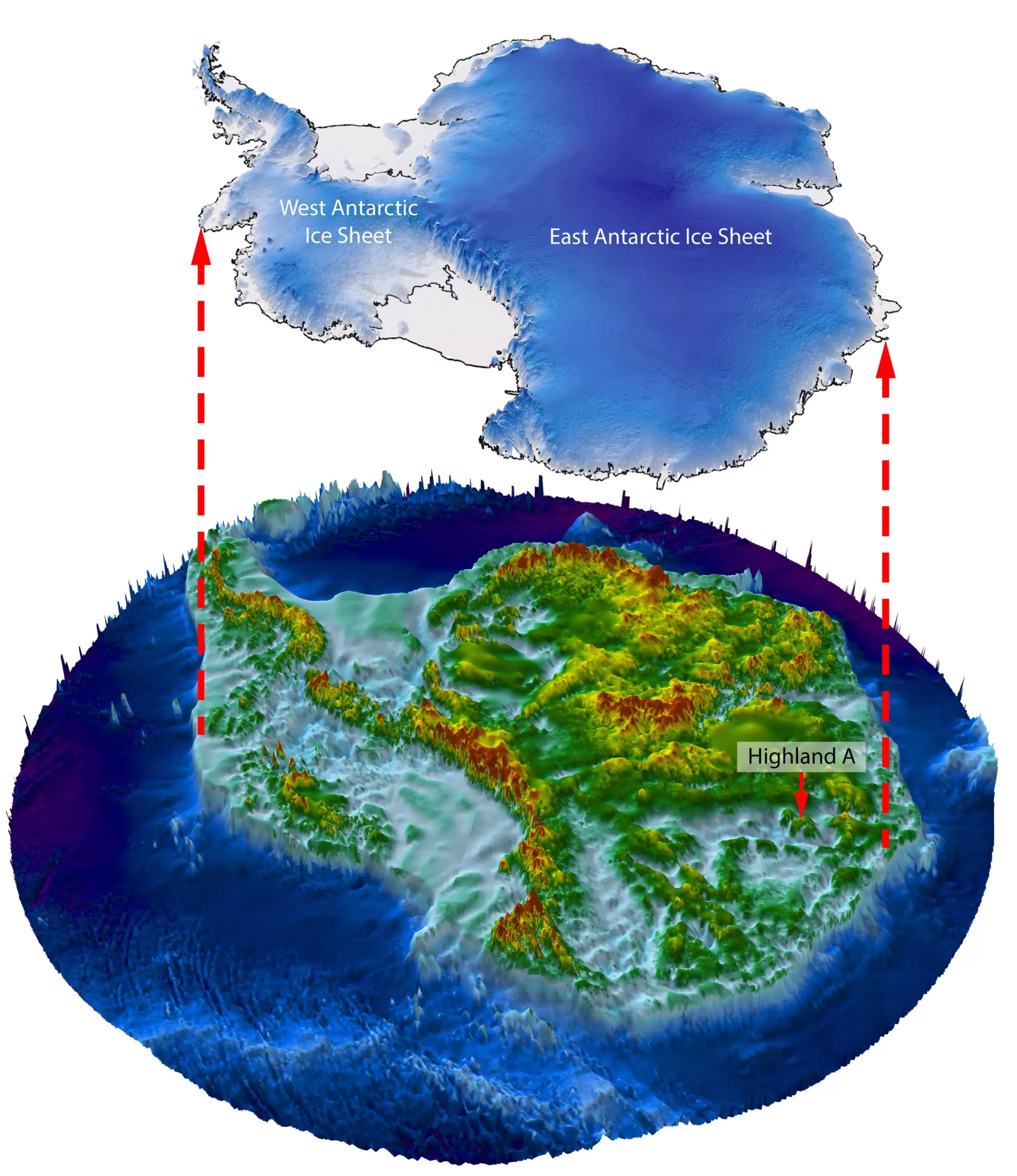A groundbreaking discovery has been made by scientists who have uncovered a vast hidden landscape, preserved under the Antarctic ice for millions of years. This landscape, which stretches across an area larger than Belgium, has remained untouched for potential tens of millions of years. However, alarming concerns are raised by British and American researchers regarding the potential threat of human-driven global warming, which could expose and jeopardize this unique and fragile ecosystem. In this article, we delve into the details of this astounding discovery and the implications it holds for the future.
According to Stewart Jamieson, a glaciologist at Durham University and the lead author of the study, the land beneath the East Antarctic Ice Sheet remains largely unexplored, making it less familiar to researchers than the surface of Mars. To understand and visualize this hidden landscape, the researchers employed innovative techniques. Instead of directly studying the topography beneath the ice, they studied existing satellite images of the surface to identify valleys and ridges lying over two kilometers below. These landforms were then combined with radio-echo sounding data to create an image of a river-carved landscape characterized by plunging valleys and sharply peaked hills. This extraordinary view resembles the Snowdonia region in northern Wales, providing a glimpse into a long-lost world.
The origins of this concealed world are shrouded in mystery, and precisely when sunlight last touched its surface remains uncertain. However, the researchers estimate that it has been at least 14 million years since exposure. Jamieson even speculates that the landscape may have last been uncovered over 34 million years ago when Antarctica first froze over. The area was once teeming with trees, forests, and possibly inhabited by various animal species before being “frozen in time” by the encroaching ice.
While this discovery sheds light on a hidden landscape of majestic proportions, it also brings forth concerns about the impact of global warming. The researchers warn that rising temperatures due to human activities could pose a severe threat to this hidden ecosystem. They highlight the possibility of developing atmospheric conditions similar to those prevalent between 14 and 34 million years ago when temperatures were three to seven degrees Celsius warmer than currently. This increase in temperatures, if realized, could expose the landscape, resulting in irreparable damage.
While the threat of global warming is undoubtedly pressing, there is optimism that the landscape’s vulnerability may not be immediate. The site is located hundreds of kilometers inland from the ice’s edge, making any potential exposure a distant possibility. The fact that past warming events, such as the Pliocene period around three to 4.5 million years ago, did not uncover this landscape suggests some resilience. Nonetheless, the tipping point for a “runaway reaction” of melting remains uncertain, and its consequences could be dire.
The revelation of an ancient landscape lying beneath the Antarctic ice evokes a sense of wonder and awe. This hidden world, frozen in time for millions of years, presents a unique opportunity for scientific exploration and understanding. However, the ominous threat of global warming looms overhead, potentially unravelling the secret it has kept hidden for eons. It is crucial, now more than ever, that humanity takes action to mitigate climate change, ensuring the preservation of this ancient landscape as a testament to our planet’s history.


Leave a Reply